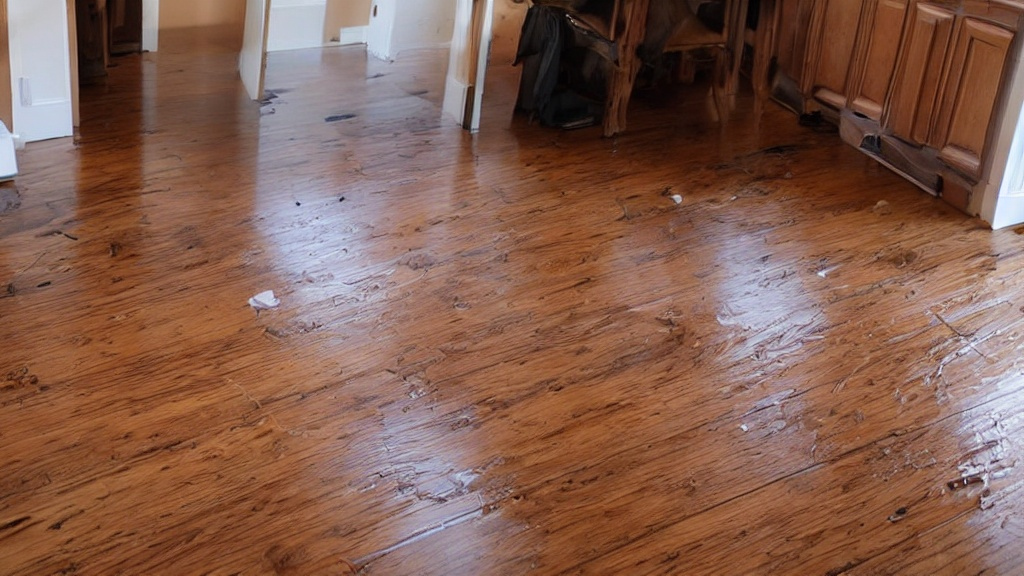Introduction
Wood floor water damage can be a nightmare for homeowners, as it poses a threat to the integrity and value of their property. Whether it’s from a small spill or a major flood, water damage can lead to warping, mold growth, and a host of other issues if not addressed promptly and effectively. In this guide, we’ll explore the signs of water damage on hardwood floors, how to mitigate the damage, and steps to repair and prevent it in the future.
Signs of Water Damage on Hardwood Floors
Identifying the Problem
The first step in fixing wood floor water damage is recognizing the signs. These may include:
- Odor: A musty smell emanating from beneath the floorboards could indicate moisture or mildew growth.
- Crowning: When the moisture content is higher at the top of the floor, causing it to swell and create a crowned appearance.
- Staining and Discoloration: Visible marks on the surface of the wood floor.
- Buckling: Warping or lifting of floorboards due to water absorption.
- Mold Growth: The presence of mold, indicating prolonged moisture exposure.
Also Read: Water Damage Houston: Protecting Your Property Against Disaster
How Water Damages Hardwood Floors
Understanding the Impact
Water infiltration into hardwood floors leads to swelling and expansion, causing unsightly bulges and potentially irreversible damage. The porous nature of wood makes it susceptible to moisture absorption, necessitating swift action to prevent further harm.
Mitigating Hardwood Floor Water Damage
Immediate Steps to Take
- Find the Water Source: Identify and address the source of water ingress, such as leaks or burst pipes, to prevent further damage.
- Remove Wet Objects: Safely relocate wet items to facilitate drying and minimize saturation of the floors.
- Dry the Floors: Utilize towels, rags, or a wet-vac to remove standing water from the affected area.
- Clean Your Floors: Scrub the floors to remove impurities and prevent permanent damage.
- Ensure Thorough Drying: Use fans, dehumidifiers, and open windows to expedite the drying process and prevent mold growth.
Repairing Water Damaged Wood Floors
Restoring Your Flooring
If your wood floors have sustained water damage, follow these steps for repair:
- Assess the Damage: Determine the extent of the damage and plan accordingly for repairs.
- Replace Damaged Boards: Remove and replace any severely affected floorboards to restore structural integrity.
- Refinish the Floor: Sand, stain, and seal the repaired area to match the rest of the flooring for a seamless finish.

Preventing Future Water Damage
Protective Measures
To safeguard your wood floors from water damage in the future, consider these preventive strategies:
- Use Rugs and Mats: Place mats at entrances and under sinks to trap moisture and prevent water tracking onto the floors.
- Inspect Your Home: Regularly check for leaks in plumbing and roofing to address potential sources of water damage.
- Perform Maintenance: Seal hardwood floors periodically to enhance water resistance and prolong their lifespan.
Conclusion
Wood floor water damage is a serious concern for homeowners, but with prompt action and preventive measures, it can be mitigated and repaired effectively. By identifying signs of damage early, taking immediate steps to address the issue, and implementing preventive measures, you can protect your hardwood floors and preserve the beauty and value of your home for years to come.
In conclusion, knowing how to fix wood floor with water damage is crucial for maintaining the integrity of your home’s flooring. By following these steps and staying vigilant, you can effectively address and prevent water damage, ensuring the longevity and beauty of your wood floors for years to come.










